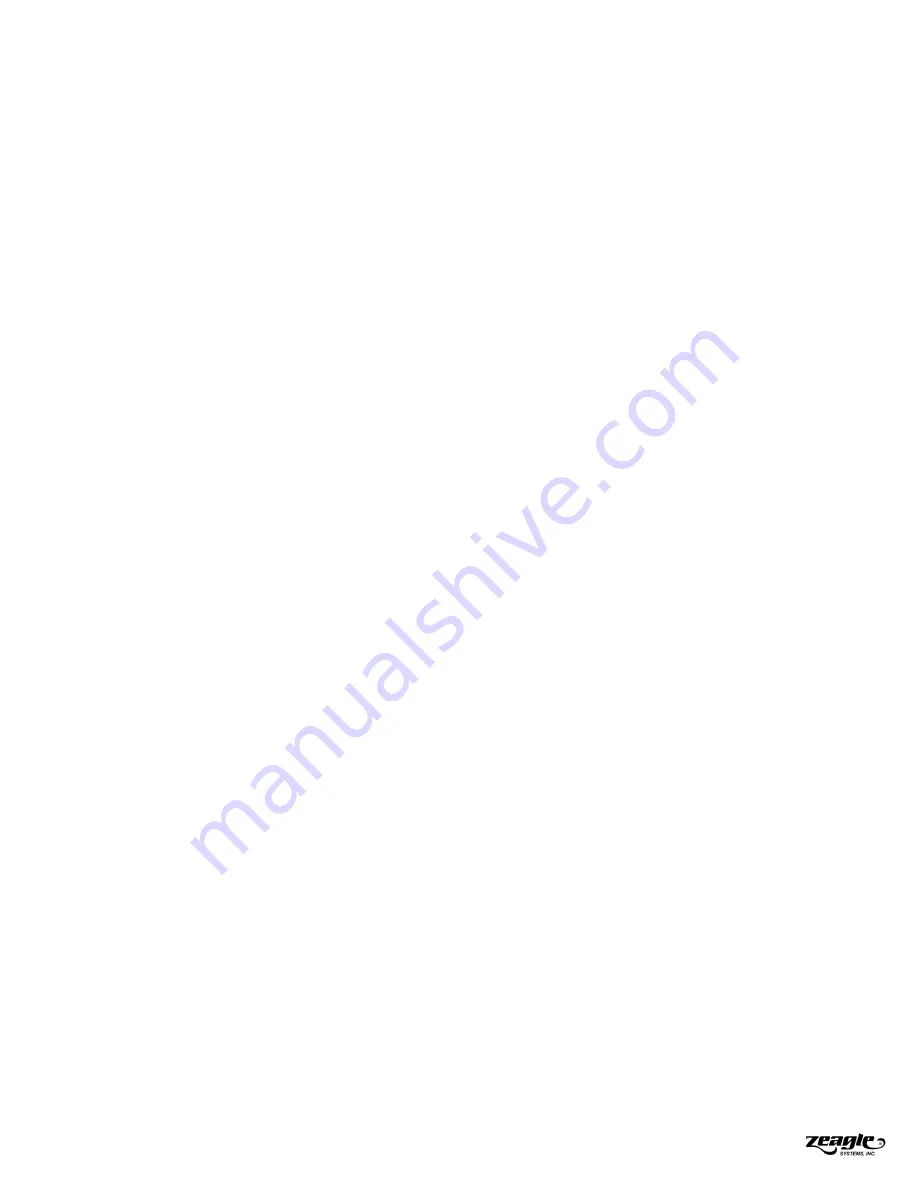
4.3 Cleaning and Inspection of the 1st Stage
4.3.1 Clean all metal parts of the first stage in an ultrasonic cleaner or cleaning solution. See Section 6.3
for recommendations on cleaning solutions. Remove the O-rings before cleaning any metal parts since
the soft O-ring material will absorb cleaning energy from the ultrasonic cleaner reducing its effectiveness.
If major visible corrosion or deposits exist on parts, use a bristle brush, wooden, or plastic stick to rub the
deposits off. Allowing acidic cleaning solutions to do all of the work if deposits are severe, will result in
damage to internal chrome plating which will make parts even more susceptible to future corrosion.
4.3.2 Remove the regulator parts from the cleaning solution. Rinse with clean fresh water, then blow
internal passageways dry with clean, dry compressed air.
4.3.3 Inspect all O-ring grooves for scratches or wear. If the regulator was leaking air because of scratch-
es or wear, replace the parts. If some corrosion deposits persist, carefully wipe them away with a plastic
scrubbing cloth or plastic or wooden dowel. Blow any resulting dust out of the regulator parts.
4.3.4 Closely examine the sealing cones (orifices) in the Body (14) where the valve Plug Assembly (20)
and where the Seat (6) of the Piston (4) seal.
4.4 PRELIMINARY ASSEMBLY OF THE FIRST STAGE
4.4.1 To determine the identity of each O-ring in the Service Kit, remove them from the bag and use
the O-ring Identification Chart on the front page of this manual. Lay each O-ring over its corresponding
picture on the page and read the description. Before installing new O-rings into the regulator, lightly lubri-
cate the O-rings with LTI Christo-Lube 111® (for enriched air regulators), or Dow-Corning 111® silicone
grease. The most effective way to lubricate the kit O-rings is to put them in a small plastic bag with a pea
sized amount of grease. Rub the O-rings and grease together in the bag until all the O-rings are coated
evenly. Try not to wipe the lubrication off the O-rings when assembling them onto other parts.
4.4.2 Use the Stem (21) to turn the Plug Assembly (20) clockwise in the valve port in the Body (4) until it
bottoms.
4.4.3 Install a new lubricated O-ring (18) onto the valve Bonnet Nut (23).
4.4.4 Install a new lubricated Teflon Seal (22) into the Bonnet Nut (23).
4.4.5 Install the Stem (21) into the Bonnet Nut (23).
4.4.6 With the Stem (21) slightly protruding from the Bonnet Nut, insert the Stem’s tang into the slot of the
Plug Assembly (20). Turn the Bonnet Nut Clock-wise to screw it into the Body (14). NOTE: While screw-
ing the Bonnet Nut into the body, periodically twist the Stem and the Plug Assembly to be sure that they
are properly engaged. Tightening the Bonnet Nut down without the tang of the stem engaged in the Plug
Assembly can damage the tang on the Stem. Tighten the Bonnet Nut (23) to 2-3 ft/lb (3-4 Nm) of torque.
4.4.7 Lubricate with a small amount of grease and install the Teflon Washer (24) onto the Stem (24).
4.4.8 Install the Handwheel (25) onto the stem.
4.4.9 Install the Spring (26) into the Handwheel.
10


























